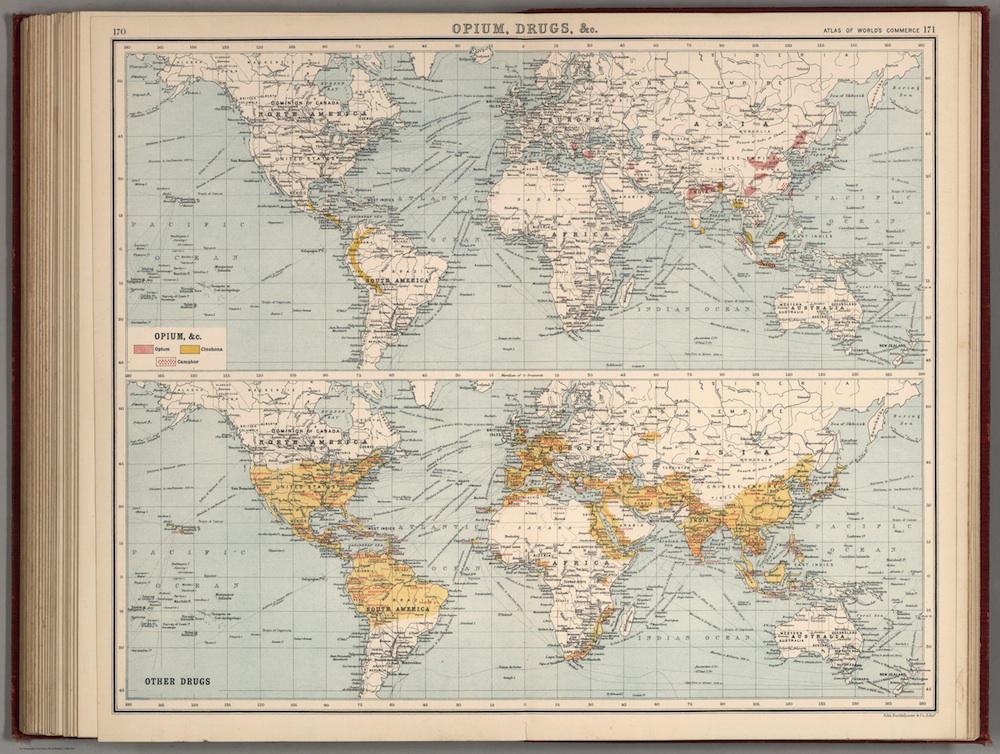This map of trade in opium and other drugs appeared in J.G. Bartholomew’s Atlas of the World’s Commerce, published in London in 1907. The book offered maps of infrastructure, communications, and exports, accompanied by statistical diagrams and interpretations; the David Rumsey Map Collection has digitized the atlas, and you can view the rest of it here.
The drug exports charted on this map include camphor (once used in a wide variety of medical and nonmedical applications), cinchona (used to treat malaria), castor oil, ginseng, licorice, and peppermint, along with those we’d recognize as illegal “drugs” today: opium and coca.
In their book A History of the Twentieth Century in 100 Maps, Tim Bryars and Tom Harper write that this map was “produced towards the end of the era sometimes known as the ‘great binge’ “—in Britain, the four to five decades between the conclusion of the Second Opium War and the beginning of the First World War. Opium was freely and widely used in the United Kingdom until 1916, when the government prohibited its possession in an emergency act that would be made permanent after the end of the war.
In keeping with the casual attitude toward the drug that still prevailed in Britain upon the publication of this atlas, the statistical diagram accompanying this map calls opium a “pleasant narcotic.”
Click on the images below to reach zoomable versions, or visit the atlas’ page on the David Rumsey Map Collection website.

David Rumsey Map Collection

David Rumsey Map Collection